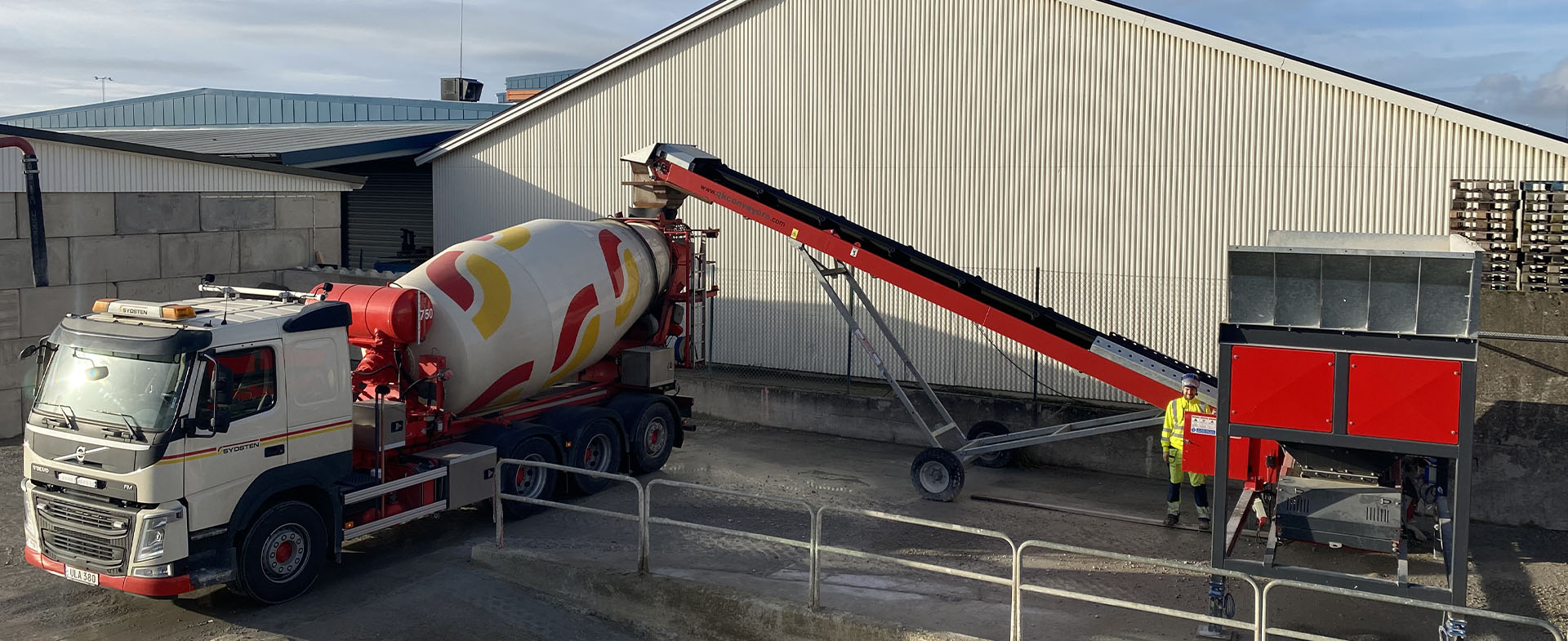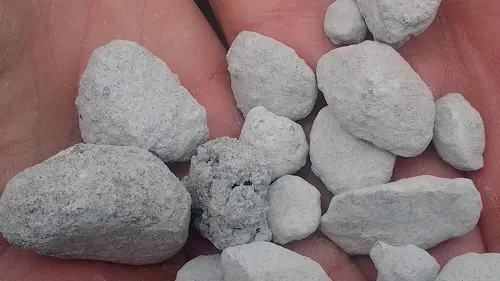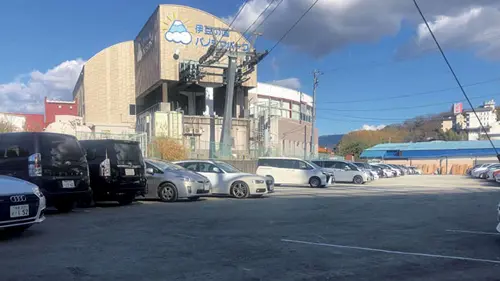Used in Scandinavian countries since 2019, this method developed by Mapei transforms waste into reusable aggregates, promoting recycling and sustainability in the construction industry. RE-CON DRY WASHING also reduces the use of water and costs.
70% less cementitious waste in every truck washout
Re-Con Dry Washing utilizes the absorption capability of the RE-CON ZERO EVO aggregates to clean trucks of cementitious waste that is otherwise washed out. Using RE-CON DRY WASHING followed by a light wash with water greatly reduces truck washout solids that lead to a high pH and increased risk of pollution of heavy metals like hexavalent chrome. With Re-Con Dry Washing, the root cause of truck washout pollutions is removed by the transformation of waste into aggregates in a repeatable process.

The RE-CON DRY WASHING process is used to absorb slurry from dirty trucks. Osama and Ahmed Alfara’s master thesis focused on aggregates made using this method.
In Scandinavia, the Re-Con Dry Washing process has been in use since 2019. Mapei was awarded the 2020 Innovation of Year Award in the Norwegian Building Industry for this innovation. The company Ølen betong is operating one of their many ready-mix plants in Norway. They were the first customer to start using the Re-Con Dry Washing method in close cooperation with Mapei’s Sustainability team. The process starts when the concrete truck comes back in the evening and is parked next to the hopper. The feed hopper feeds the dry-washing aggregate onto the conveyor belt that feeds it into the concrete truck which is rotated at high-speed. The aggregate absorbs the washing slurry inside the truck. The driver moves the truck to the materials storage unit and with the dry-washing material inside the drum rotates it forwards and backwards for a few minutes and then empties it into the storage unit. When it has dried for about 24 hours, the operator breaks it with the wheel loader and put it into another storage unit. Then the process starts over: the material is fed back into the hopper and continues the dry-washing process. If the weather is nice and dry, the process can be repeated for several weeks. If it is rainy and wet, one needs to replace the material after one week. When the trucks have completed their work for the day and do their dry-washing process, the mixing trucks are much cleaner because much more of the washing slurry is caught than before. When the trucks have been dry washed, they only need a light wash and can be parked for the day. Ølen betong’s representatives claim: “When the aggregates are saturated, we use them to produce concrete blocks to make what we call “Lego blocks” which is a product we can sell out. In this way, we manage to recycle both concrete and slurry.” The result speaks for itself: the Ølen betong plant today has very little washing slurry and the vast majority is transformed into recyclable aggregates and used for concrete block production on site. The company has set an ambitious target for this plant: “The goal is no doubt to reach 100% recycling. Everything we put in our concrete trucks should be used as a product in one form or another. We see lots of possibilities here. We have already been able to realize some of them and we are excited to see what we will be able to do in the future. There is no doubt that Re-Con Dry Washing process helped us enormously tackling our problems with washing slurry. We can say: “It works!”.

The Re-Con Dry Washing by Mapei is an effective way to manage waste from the concrete production as it cleans concrete trucks, significantly reducing environmental waste and pollution.
The company AB Sydsten operates a ready-mix plant that has been using the RE-CON DRY WASHING method since 2021. We asked AB Sydsten to share their thoughts on the RE-CON DRY WASHING method. “We have seen many advantages with this method,” they claim. “The water consumption is greatly reduced and the water that we do get from washing the trucks with our new high-pressure system is much cleaner than before, even if we use less water for each truck. The washing water basically contains only sand and so it sediments much quicker than before. This way we can recycle the water easier in the washing system and we are preparing to start to use it for washing the concrete mixer as well.” As for the economic aspects of the method, they admit that the method does require some investment in storage units, crusher bucket and the high-pressure washing lance. But the total investment is much less than if they had invested in a completely new concrete reclaiming system. Reduced washout waste, cleaner water and less water usage are the three aspects that, according to AB Sydsten, makes this method a success. The method in combination with producing and selling blocks from some of the returned concrete and used material from the dry washing process also generates an income, and this combination is very positive.
Find out more about Mapei solutions for the concrete industry at: https://www.mapei.com/cis/en/home-page

End result of the Re-Con Dry Washing process: recycleable aggregates with increased carbonation potential by absorbtion and hardening of the cementitious waste from concrete truck washing.















